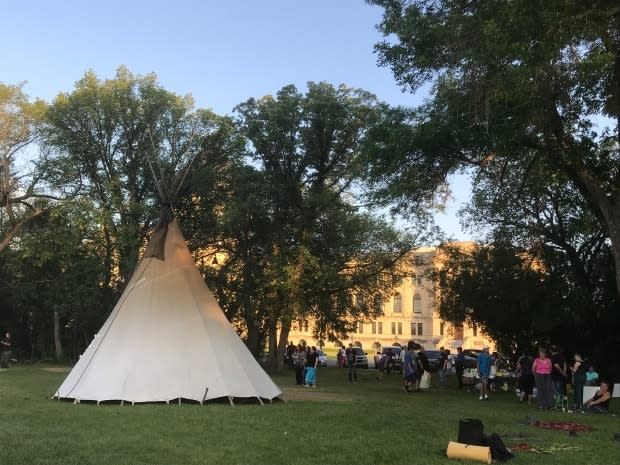'No doubt' crime stats were down in Regina during pandemic: police chief
People's behaviours were a lot different in 2020 as a result of the COVID-19 pandemic, which likely resulted in changes in crime rates, according to Regina police Chief Evan Bray.
"There's no doubt our crime stats were down," Bray said Monday, as the Regina Police Service released its 2020 crime statistics report at the Board of Police Commissioners meeting.
"I have to think COVID played a lot in that."
The biggest drop came from crimes against property: there were far fewer break-ins, motor vehicle thefts, and thefts both over and under $5,000 in 2020 than in 2019.
In 2020, for example, there were 3,181 fewer reported thefts under $5,000 — 4,465 in 2020, compared to 7,646 in 2019, a 41.6 per cent decrease. The only crime against property category that saw an increase was arson, up 28 per cent from 2019.
According to Bray, one or two people might be behind dozens of arson cases, and once they're caught the statistics go back down.
"Arson and mischief, like graffiti, are two examples of how one or two people can commit 50 crimes," Bray said in an interview with CBC Monday." You can see a 75 per cent increase in the stats because one person had a busy weekend."
One of the sharpest decreases was for a traffic-related issue.
In 2019 there were 1,962 charges in Regina for using a phone while driving, compared to just 421 the following year — a difference of 79 per cent.
The crime statistics report did not make note of what might have caused this decrease.
However, Bray noted that "ultimately, people's behaviour was a lot different in 2020, and that caused crime rates to look different."
No major drop in crimes against people
But some types of crime actually increased, or didn't decrease nearly as significantly as others.
"Our crimes against a person, so our more serious assaults, robberies … those were down, but sadly not down as much as we would have liked to have seen," said Bray.
Crimes against a person in total were down 4.3 per cent, a stark contrast to the 34.6 per cent total decrease in property crimes.
Sexual assault statistics also saw only a small change between 2019 and 2020, with a reported 186 sexual assaults in 2020 versus 189 in 2019. Sexual crimes in the "other" category, however, rose from 64 cases in 2019 to 78 cases the next year.
Homicides were up slightly, with 11 in 2020 compared to nine in 2019.
"Each homicide is a huge tragedy in our city and so every time we can hold offenders accountable and give a family some answers and some closure, it's incredibly important," said Bray.
Also notable was a 14.1 per cent increase in criminal harassment or stalking cases, as well as a decrease in prostitution-related offences, with 2020 seeing zero charges, compared to 27 in 2019.
Social challenges a cause for concern
While crime rates may be interesting enough to analyze, they only tell part of the story of what communities are experiencing, Bray said.
There are issues that don't fit neatly into crime statistic columns, such as domestic conflict, overdoses, and suicides, he noted.
"Our officers were still very busy, but they were busy with a different type of complicated challenge in our community that often doesn't have a clean outcome," Bray said.
"It's something that we need lots of wraparound supports and services to try and dig into," he said."
"Suicides were a big call for service for us this past year.… That's a cry for help, and arresting a person and putting them in a cell is not solving that problem."

But police can't do it alone, according to Bray, and tackling these issues requires a team effort between the police and organizations such as the Ministry of Health.
"We're going to respond to those calls, but then we're going to need our community partners to work with us to help dig into some of these problems."
